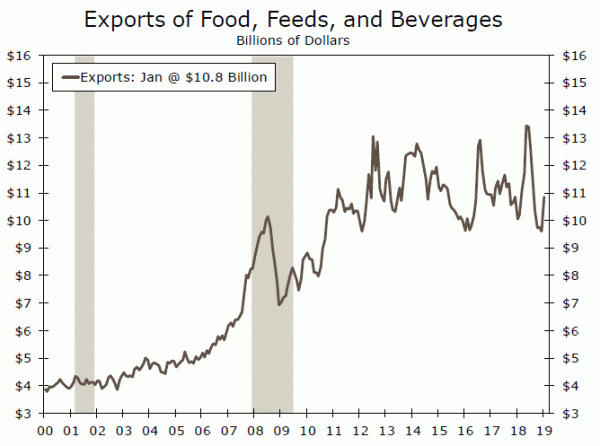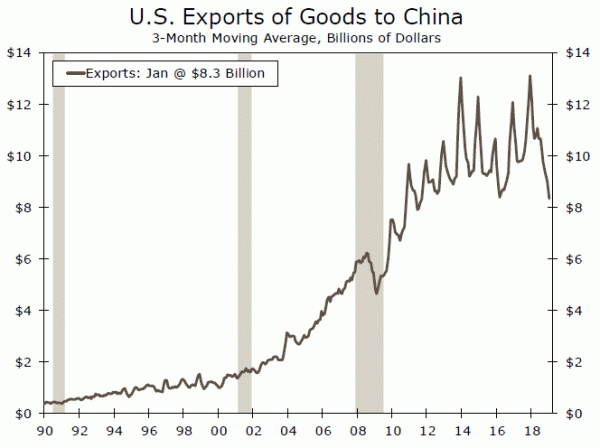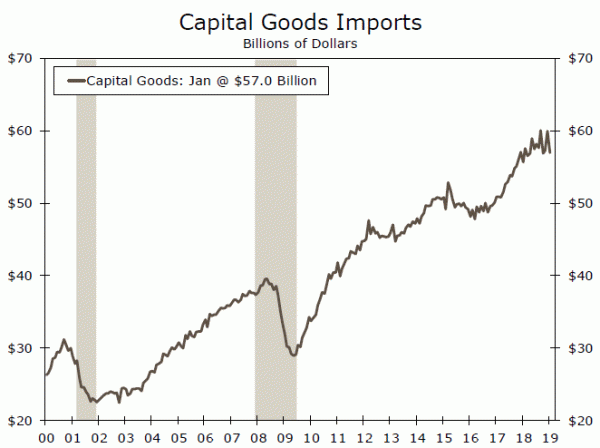After swelling to its largest gap in 10 years last month, the trade deficit narrowed in January. The unexpected move will lift tracking estimates for Q1 GDP, but the imports collapse is worrisome for domestic demand.
Big Narrowing in the Trade Deficit
The trade gap narrowed by a substantial $8.8 billion in January. To keep that in perspective, it’s useful to consider that in the prior month the trade deficit was as large as it has been at any point since the height of the financial crisis in 2008. Indeed, even after the improvement here in January, the deficit remains larger than it was at any point between 2009 and 2016.
Still, what happened in January is that most of the details moved favorably for reducing the trade deficit. Exports increased. Imports decreased. The trade deficit narrowed.
Again with the Beans?
Exports increased $1.9 billion, retracing a little less than half of the $4 billion drop in December. Most of the gain came on the goods side. The biggest major category increase was food and beverage exports, which shot up 13.1% in January. Within that category, the big mover was once again soybeans. The $910 million increase was roughly eight times larger than the second biggest mover (nuts were up $118 million) and brings the category to $1.2 billion in the month—a roughly four-fold increase from December levels. Tempting though it may be to conclude that this is a China effect, we cannot be sure. In fact, U.S. exports to China fell slightly in January; the big narrowing in the trade deficit with China was entirely a function of shrinking imports from that country.
What is Behind the Drop-Off in Imports?
The decline on the imports side was more than three times larger than the increase on the export side. Interestingly, of the $6.8 billion decline in imports in January, $5.7 billion was attributable to smaller goods imports from one country: China.
There are any number of explanations for that, but the two best arguments in our view are either that the tariffs are biting imports from China or there is simply diminished demand for the stuff we import from there. If it’s just the tariffs, then we could reasonably expect to see some supply chain disruption in coming months as U.S. businesses find alternative sources for goods they used to get from China. We will watch supplier deliveries and inventories to get a better sense of that, but at the moment supply chains seem tight but not yet completely strained to the point where there are widespread production delays.
The alternative argument (just a softening in demand) can find a foothold in the data. Overall imports (not just from China) declined in every major category, but the two biggest were industrial supplies, which fell 5.0%, and capital goods, which slipped 4.9%. These are the big categories too; together, the drop in industrial and capital goods accounted for $5.3 billion of the overall $6.5 billion decline in goods imports overall.
















